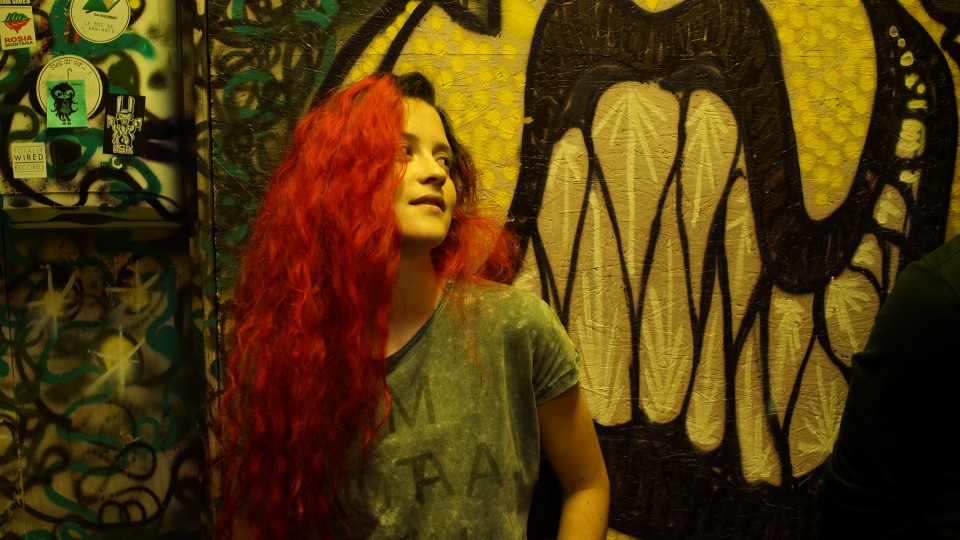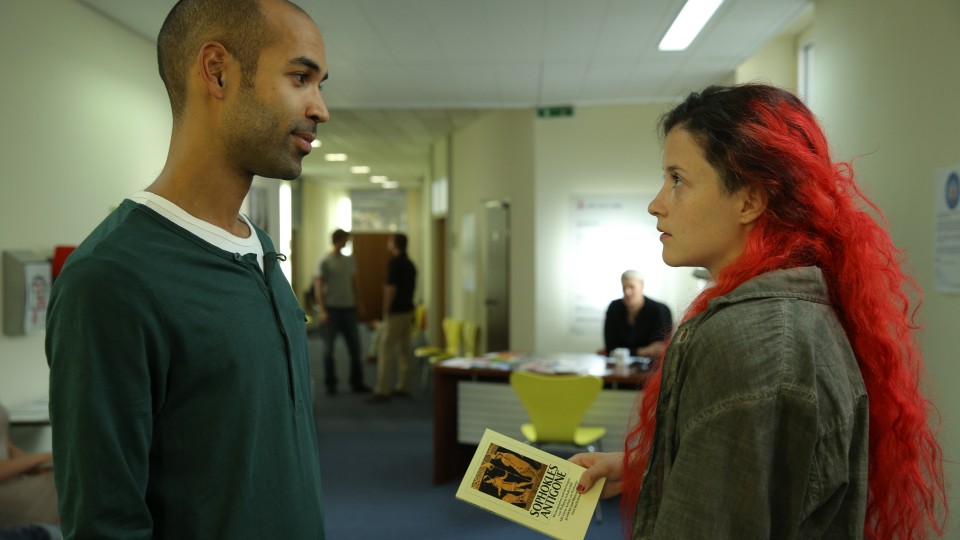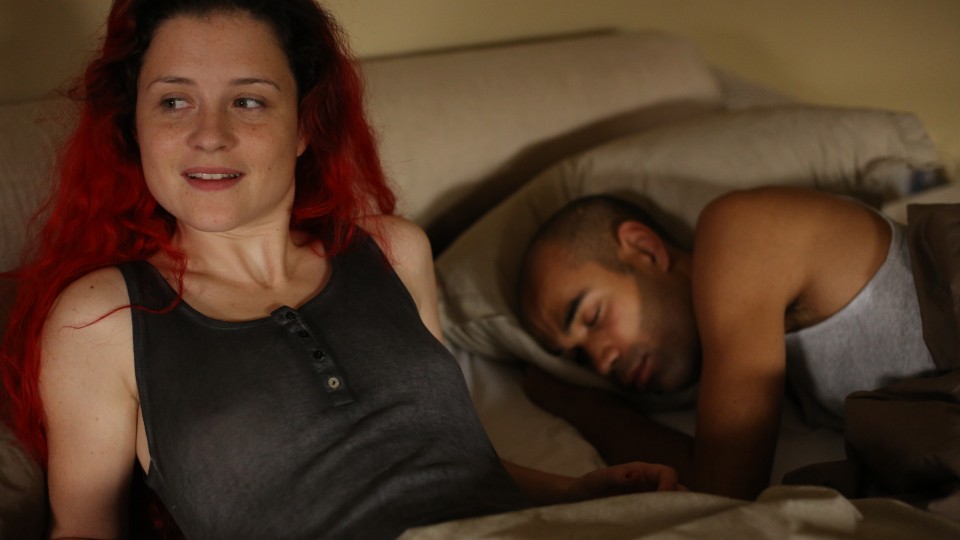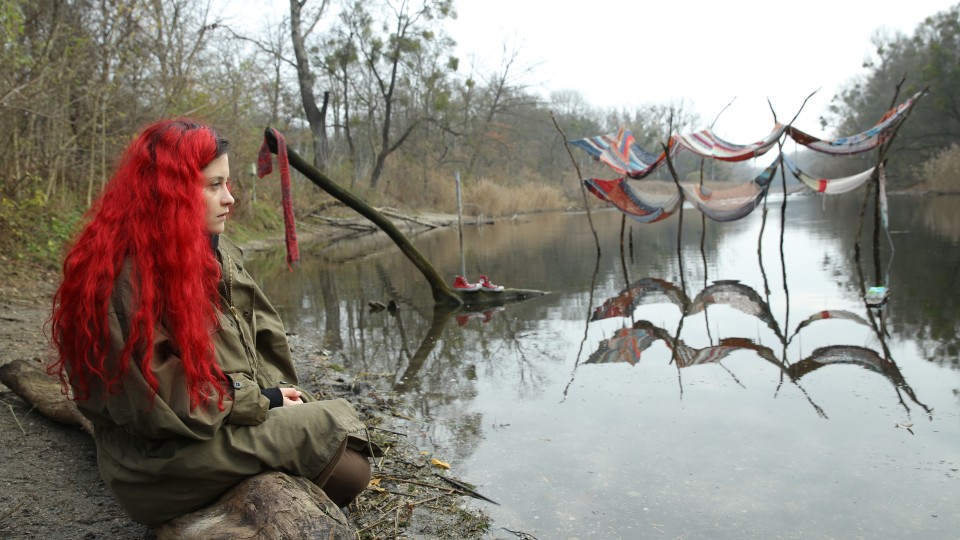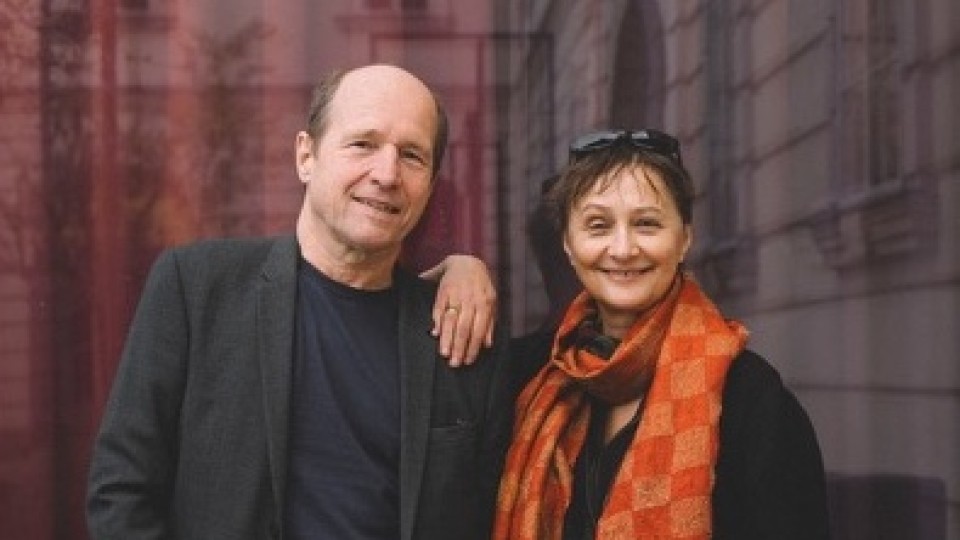«Cornelia Travnicek has created a wonderful, powerful heroine. A strong, rebellious and almost unruly female character who
is at the same time fragile and vulnerable» Sabine Hiebler & Gerhard Ertl about their adaptation of Cornelia Travnicek's novel
CHUCK, selected for World Cinema Competition in Montréal.
After Anfang 80 (Coming of Age), in your new film Chucks you again tell the story of a loving relationship that is destined from the very start to be of a finite nature. Once again
the characters defy convention, once again they are guided by feelings rather than reason. Is this a message you want to convey
with particular emphasis at the present moment?
SABINE HIEBLER: In both films the subject is life and death. For us that's an irresistible combination of themes, and of course there are
overwhelming emotions attached to this combination. It's certainly not possible to cope with these subjects by means of reason
alone. And we again wanted to make an emotional film. For us film – like music – is extremely powerful in this context.
We regard film as an emotional arena, but we are less concerned with being guided by all kinds of emotion than the question
of how you deal with emotions that do arise: which value you accord them and how you choose to handle them.
This time you used a novel as the basis for your screenplay, unlike Anfang 80. What was it about the novel which made you feel it was suitable for a film adaptation?
SABINE HIEBLER: Whether it's an original screenplay or an adaptation of a novel, the crucial point for us is how interesting the story and
the characters are, and that interest was immediately apparent with Chucks. Cornelia Travnicek has created a wonderful, powerful heroine. A strong, rebellious and almost unruly female character who
is at the same time fragile and vulnerable – and that appealed to us a great deal.
GERHARD ERTL: It’s also startling how many similarities there are between the two stories in thematic terms, even though they are
rooted in such completely different age groups.
Although the two stories display similar basic features, you have developed a different approach this time. In what ways does
the approach you use in Chucks differ from that of the previous film?
GERHARD ERTL: Although our society is obsessed with the cult of youth, that only applies as long as being young means being healthy, strong,
problem-free and success-oriented. As soon as young people become "dirty", "noisy", push things to the limits, explore boundaries
or confront society, they are very quickly perceived as disruptive. But it can't be the task of young people to grow with
as little friction as possible into a society that refuses to allow them that period of development.
The film begins with a brief sequence of childhood memories. The little girl catches a butterfly in a meadow in summer. Why
did you choose this brief moment as the introduction to an unreal world?
SABINE HIEBLER: These memories are very real for Mae. To a certain extent she is trapped by them. And these flashbacks run through the entire
film, parallel to her process of digesting reality and developing. The scene with the butterflies continues later in the film
as well, and it’s Mae’s first confrontation with death.
How did you develop the visual design and the aesthetics of memory and the present together with cameraman Wolfgang Thaler,
who was also your associate on Anfang 80?
GERHARD ERTL: Wolfgang Thaler was enormously important for the creation of this film. This time he read the very early versions of
the script and became involved from the beginning. It was fantastic that we could build on our joint experience with Anfang 80 and at the same time devote more attention to the visual aspect this time. The young, lively locations gave us much more
space to play with in that sense.
In developing visual language, to what extent are you influenced by having a novel as the basis for the story? In this case,
you present the world of people in their early 20s who belong to a sprayer scene. In visual terms, you also pay tribute to
Vienna’s street art scene.
SABINE HIEBLER: In that respect we deviated a great deal from the novel. A lot of contemporary issues have been introduced. Vienna has a
very extensive sprayer scene. There are a lot of different positions, from the purely expressive to artistic and/or political
interventions. The arrest of the sprayer Puber, along with the clearance of the Pizzeria Anarchia, were events that came together
just as we were preparing to make the film. Graffiti is the appropriation of public space. It's a way for young people to
demand to be heard: it’s visual communication.
Not only does Mae know Paul has a fatal illness, she was also confronted with separation and death several times in her childhood.
What do these experiences do to her?
GERHARD ERTL: Mae is forced to experience her brother’s sickness and death, and then the collapse of her family: her parents’
divorce, moving house, changing school, etc. A lot of children and young people experience this or similar things, as well
as living in a time which is subject to fairly constant crisis. The pressure to achieve and the acceleration of socialization
don't leave them much time to overcome such fractures. Mae still hasn't processed these experiences at the moment when she
meets Paul. That happens more or less parallel to the development of Paul's illness.
Mae begins to knit for Paul. A reference to Penelope? The knitting places an increasingly large protective net over Paul,
and she is also working with a thread which necessarily has an end.
SABINE HIEBLER: It's a nice idea, but Penelope keeps on unravelling her knitting in order to pass the time and steal a march on her suitors.
It has a completely different function for May. She develops her knitting from a simple scarf until it becomes an installation
for a room and the landscape. She almost cocoons herself against the sterile hospital atmosphere in this way, and later she
constructs a knitted memorial in the meadow. But the idea of knitting is already established in the novel: we simply extended
it, inspired by guerilla knitting. We felt there was an obvious parallel with graffiti, and we very much like the idea of
creating this visual arc with simple, reduced means. The core concept has a very punk feeling: to achieve the greatest possible
effect with the smallest possible means.
One thing which emerges in both films is the irreconcilable chasm between the generations, no matter whether old people or
adolescents are the focus. Is there a general observation behind this?
GERHARD ERTL: As Cornelia Travnicek so aptly puts it: Families have never been easy". And there will always be a generation gap, but for
us it's less a matter of being irreconcilable than incompatible. Accelerated socialization and pressure to achieve put many
people in the red – and there just isn't much time for individual needs. At the same time there are simply fewer resources
available. Anything else that could cause problems is therefore excluded – and that also happens in the family. In Anfang 80 the children don't have enough understanding for the older people, and in Chucks the parents behave that way towards the younger people. Mae’s mother only survives the tragic collapse of the family
in a very damaged state.
SABINE HIEBLER: Incidentally, the mother is played by the fantastic Susi Stach, who took the part of the daughter in Anfang 80.
This time you chose for the leading roles two young actors who probably haven't starred in films before. How did you come
to choose Anna Posch and Markus Subramaniam? What was it like, working with them?
SABINE HIEBLER: Markus completed the Reinhard Seminar and has had some experience in the theatre since then, and Anna acted in Peter Kern’s
Diamond Fever, after having attended drama school. So they both weren't entirely inexperienced, but as far as the script was concerned
it was obvious to everyone that these were very substantial parts. Chucks is an intense story with a great deal of emotion, and Mae (Anna Posch) is in almost every scene.
GERHARD ERTL: Markus Subramaniam also had to lose 10 kg to play the part, but they both approached the task with real dedication. As far
as working with them was concerned, we often used improvised scenes, or we worked out at the scenes together, or we placed
the actors in situations they weren't at all prepared for. That was very important for the authenticity and freshness.
The music, most of which (though not all) was composed by Anja Plaschg, has a major role to play here. Was the music composed
especially for the film? Why is music such an important factor?
GERHARD ERTL: Music always plays a very important role in our films, if only because we make emotional films. That was already the case
with our early experimental films, where we created the music ourselves. And Chucks is set in the youth scene, in clubs, communes… music is everywhere there. So this time we only used pieces of music
that had already been made, which was simply appropriate for the story in the atmosphere.
SABINE HIEBLER: At the moment the Austrian music scene is in a fantastic place, so we had a huge wealth of pieces to choose from. As well
as titles from Bilderbuch, Clara Luzia, Julian & der Fux, Camo & Krooked, Monsterheart, and many others, Soap&Skin was of
course an absolute stroke of luck for the film. We wanted to give our heroine a very strong female voice musically from the
outset, and Anja Plaschg certainly has that. The music has an incredibly strong presence, even or especially when she uses
tender, fragmented tones.
Interview: Karin Schiefer
August 2015

